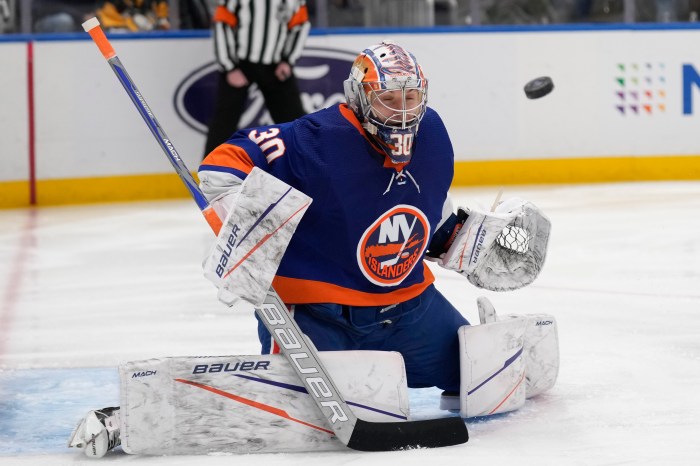By Joan Brown Wettingfeld
The advent of our new publication, The Jamaica Times, seemed an appropriate reason to delve into the early history of Jamaica, which as far back as 300 years ago was considered one of the fastest growing settlements on Long Island.
From the beginning of our nation, intriguing stories have been linked to the origins of the names of our counties, villages, towns and cities. Our locale is no exception. Flushing or “Vlissingen,” was the anglicized version of a place in Holland; Bay Side, as it was known in the early part of the l9th century, took its name from its proximity to our Bay. Jamaica, now a thriving center in Queens, derived its name from the Indian word for that industrious animal, the beaver, which populated that area’s fresh water ponds in great numbers.
In 1655 a group of Hempstead settlers set out to find land upon which to found a town, seeking “a place where they hope with God’s blessing upon their labors more comfortably to subsist.”
Richard Odell, Nicholas Tanner, Richard Ogden, and Nathaniel Denton were among those who located the site for the new town on the green slopes which ran from the “hills to the Bay.” When their search came to an end, they were appointed to bargain with the Indians of the area, the Canarsies and the Rockaways, whom they correctly deemed “ye just and rightfull propryetors.” They were delegated the task of securing a deed which would in time meet the approval of Peter Stuyvesant, Governor General of New Netherlands.
This early deed dating to 1655 reveals that Jamaica’s first settlers were fishermen and farmers from Hempstead. Some had come to the lowlands as early as 1644 and lived there without government sanction until the settlement was legitimized by a patent which granted permission for work to begin on houses and for all the land to be cleared. This permission was granted by Stuyvesant on March 21, 1656. The deed had been negotiated on the 13th of September, 1655, and was signed by Daniel Denton and Roger Linas for the settlers, and the chiefs of the Canarsies and the Rockaways. The Indians received “two guns, a coat, a keg of powder, and a quantity of lead” in exchange for all the land from Hook Creek to Spring Creek, from the hills to the Bay.
This area at that time was known as “Jameco,” “Jemeco” or “Yemacah,” a derivation of the Indian word “Yameco” or “Ahmeco,” meaning beaver. In those early days beaver proliferated in the ponds and creeks nearby. The name “Jamaica” evolved through the Dutch phonetic spelling of “J”meco” and their pronunciation of the “J” like a “Y.” The English gave the “J” a hard sound and from this we eventually ended with the current name, “Jamaica.”
For a time, the Dutch referred to the settlement as Rustdorp or “country village,” and insisted that official records bear that name. The English for some unknown reason for a short time referred to the place as Crawford. Both names, however, fell into disuse, and when the colony of New Netherlands was surrendered to the English the name of the settlement was changed to Jamaica.
Thus this town , named for the beaver whose home was in the ponds of the area, drew upon these same fresh water ponds for its needs and the settlement began to grow and flourish around Beaver Pond which was located just north of Old South Road(South Road) and east of what is now 150th St. A common was set aside around the pond and continued to serve as a public square until the late l9th century.
According to the patent which Stuyvesant granted the new community in 1656, its boundaries were vaguely defined as being: on the North by Newton and Flushing, on the East by Hempstead, on the South by Rockaway Beach, and on the West by Flatlands and New Lots, an area of about 57 square miles. Today that would approximate the modern sections of Woodhaven, Ozone Park, Richmond Hill, Jamaica, South Jamaica, Hollis, Queens Village, Howard Beach, and Springfield.
The charter issued by Peter Stuyvesant was one of four. Subsequent charters included a second charter in 1660, naming the settlement Rustdorp; a 1663 charter which was issued by the English Governor Nicoll confirming the earlier charters; and the fourth charter, the Dongan charter, was the first to give the settlement the name of Jamaica and to cut it off from the Rockaways.
In 1937 a group of prominent Jamaica citizens representing merchants, bankers, businessmen, and several old families acquired the original Dongan Charter from a Manhattan autograph dealer for $200 and presented this important document to the Long Island Collection of the Queensborough Public Library
I would like to thank Mr. William Asadorian of the Long Island Division of the Queensborough Public Library for his assistance in making research material for this article available to me
Joan Brown Wettingfeld is an historian, freelance writer, and a member of the Borough President’s History Advisory Council..
































